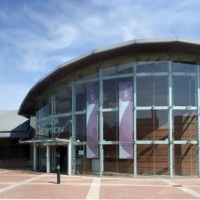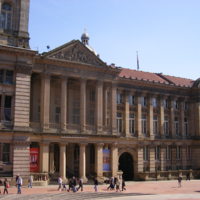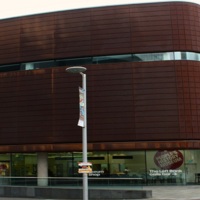
Wedgwood Museum
The Wedgwood company's founder, Josiah Wedgwood I, had the initial idea for preserving and curating a historical collection in 1774. A public museum dedicated to this purpose first opened in 1906, and moved to its present site in 2008. In 2009 the museum won the Art Fund Prize for Museums and Galleries. It underwent further redevelopment in 2015/16. The museum's rich collection of ceramics and archive material tell the story of Josiah Wedgwood, his family, and the business he founded over two centuries ago.
The collections at the museum make up one of the most significant single factory accumulations in the world. They contain a range of things from ceramics, archive material and factory equipment, to social history items that help interpret life in Georgian Britain. Key themes explored throughout the galleries include Wedgwood's links to royalty, the influence of nature on his work and his position as a successful entrepreneur.
On display in the museum also are a small collection of objects which relate to Wedgwood's prominent role in the campaign to abolish the British Slave Trade. Here, the display focusses on the production of the well-known antislavery medallion, which bears the 'Am I Not a Man and a Brother?' image. It also highlights Wedgwood's connection to Olaudah Equiano and the influence of proslavery factions in British society during the eighteenth and nineteenth century.

Birmingham Museum and Art Gallery
Birmingham Museum and Art Gallery has over forty display galleries that explore the development of Birmingham as a city, through its diverse communities. Since opening in 1885, the museum has built a vast collection of social history, art, archaeology and ethnographic items. It is one of nine sites managed by Birmingham Museums, the largest museums trust in the UK, whose vision for their service is, ‘to reflect Birmingham to the world, and the world to Birmingham.’ Housed within Birmingham's council buildings in the city's Chamberlain Square, the site welcomes around one million visitors a year.
Slavery and abolition feature as themed displays within the ‘Birmingham: Its People and Its History’ gallery, which dominates the third floor of the Victorian museum. Initially developed as part of the 2007 bicentennial commemoration activities, the displays highlight the contradictory nature of Birmingham’s relationship with the slave trade. Visitors are informed, through both interpretive text panels and collections artifacts on display, about the goods manufactured in Birmingham that were taken to Africa to trade in exchange for human beings. Simultaneously, the presence of antislavery activists in the city is explained, with digital interactives, portraits and abolitionist material culture all illustrating the role of Quakers and other prominent abolitionist figures, including Joseph Sturge and Olaudah Equiano.
The displays also alert visitors as to the existence of modern slavery by a panel headed with the words, ‘Around the world, people are still enslaved today.’ The visitors are then invited to leave their own comments as to how society can help to stop it in their community and around the world.

People's History Museum
The People's History Museum (PHM) is Britain’s national museum of democracy, telling the story of its development in Britain; past, present and future. It is located in Manchester, the world's first industrialised city and aims to ‘engage, inspire and inform diverse audiences by showing there have always been ideas worth fighting for’. Attracting over 100,000 visitors a year, with free entry, the museum outlines the political consciousness of the British population beginning with the Peterloo Massacre in 1819. The British transatlantic slave trade and the abolition movement feature in this discussion early on in Main Gallery One. In a small display, the interpretation discusses the role of slave-produced cotton in the rise of Manchester as an industrial powerhouse. It goes on to describe the important role that the people of Manchester had in supporting the abolition campaign. The focus is on the local experience. This is also illustrated with one of the exhibition’s key interpretive characters, William Cuffay, a mixed-race Chartist leader whose father was a former slave. In Main Gallery Two, the displays are brought closer to the present day, other issues explored include anti-racism and attitudes towards migration and multiculturalism. There is a clear link, although not explicitly expressed, in the interpretive text between these ideas and the lasting legacies of Britain's involvement in the slave trade.